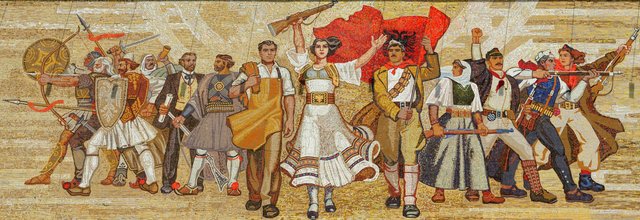Skanderbeg Saves Albania: A Lesson About Men and Women

In 1953, Russian film director Sergei Yutkevich came to Albania, a small country of three million in southeastern Europe located along the Adriatic Sea. He came to direct a film portraying the life of Albania’s greatest national hero, George Skanderbeg. Born Gjergj Kastrioti (1405–1468), Skanderbeg was called thus after the Turkish name for Alexander the Great, İskender.
According to the director’s version of his life, the Ottoman Turks took George hostage as a young boy. He was to be raised a Muslim and trained by the Turkish army in service of Sultan Murad II. Murad then employed Skanderbeg as a soldier in an elite army of highly trained foreign slaves, the Janissaries, because at the time the tribal Muslim Turks weren’t considered reliable enough to defend their own civilization.¹